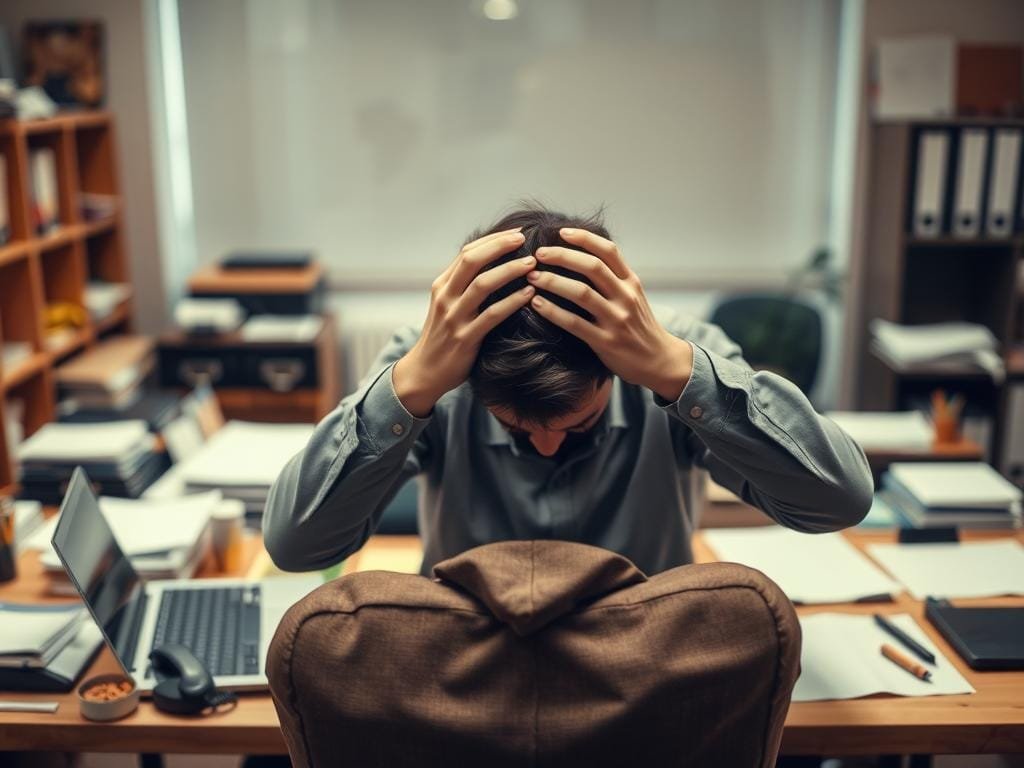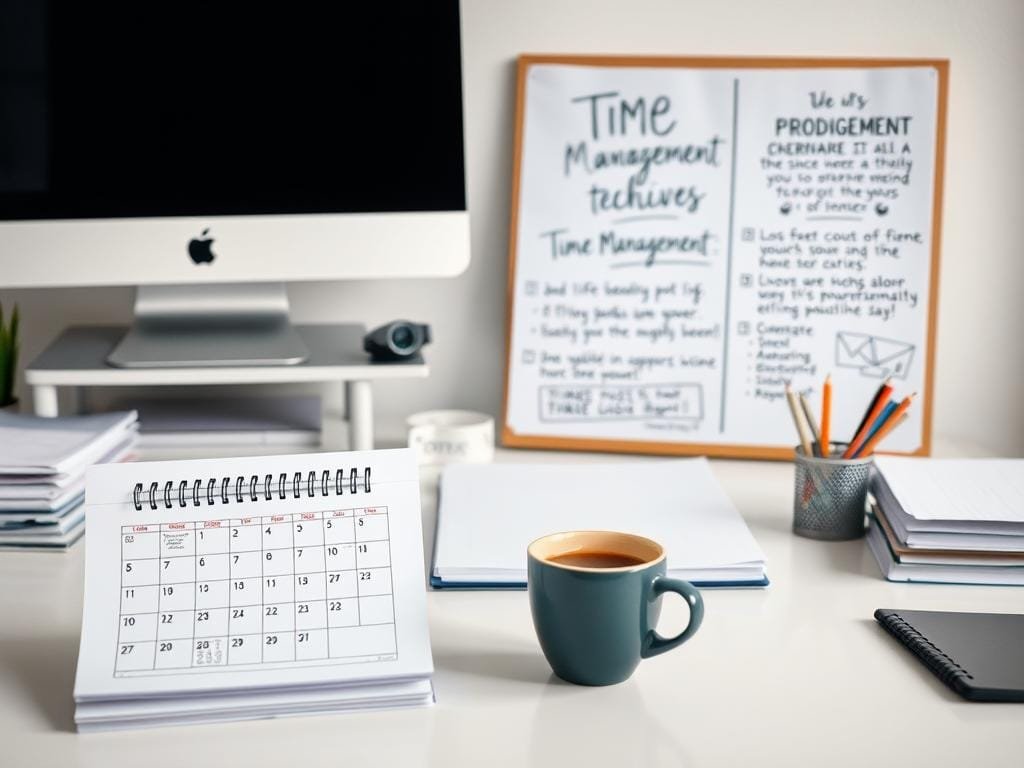Did you know millions of people worldwide face stress every day? The Manufacturing Safety Alliance of BC2025 says chronic stress can harm both body and mind. But, by using practical strategies in our daily lives, we can manage stress and improve our well-being.
By embracing a mindfulness way of life, we can handle life’s ups and downs better. This article will dive into effective ways to deal with stress management and anxiety relief. It aims to help readers live a more balanced life.
Table of Contents
Key Takeaways
- Practical strategies for managing stress and anxiety
- The importance of mindfulness in daily well-being
- Effective techniques for achieving a balanced life
- Insights from psychologists and wellness coaches
- Simple ways to incorporate stress management into daily routines
Understanding the Impact of Stress on Your Life
It’s key to know how stress works to keep your mind and emotions balanced. Stress hits people differently, so it’s important to get what’s behind it.
The Science Behind Stress: What Experts Reveal
Our bodies react to stress in ways that go back to our ancestors. When we face danger, our body gets ready to fight or run away. This is thanks to hormones like cortisol and adrenaline. Mindfulness experts say that always being in this state can harm our health.
“Chronic stress can lead to changes in the brain, affecting memory, mood, and emotional regulation,” says Dr. Lisa Feldman Barrett, a renowned neuroscientist.
Knowing how stress works helps us manage it better. By understanding its effects, we can take steps to lessen its harm.
Identifying How Chronic Stress Affects Your Body and Mind
Chronic stress shows up in many ways, like:
- Physical symptoms like headaches and fatigue
- Mental health issues such as anxiety and depression
- Digestive problems and changes in appetite
- Sleep disturbances and insomnia
Measuring Your Current Stress Levels: Self-Assessment Tools
To manage stress well, we need to know its level. There are tools to help us see how stressed we are, like:
| Tool | Description | Benefits |
|---|---|---|
| Stress Questionnaire | A detailed survey to check stress levels and symptoms | Finds where stress is high |
| Mindfulness Journal | A daily record of thoughts, feelings, and stressors | Boosts self-awareness and stress spotting |
| Anxiety Rating Scales | Standard scales to measure anxiety | Gives a clear measure of stress |
Using these tools helps us understand our stress better. This way, we can find ways to reduce it.
Recognizing Your Personal Stress Triggers
To manage stress well, knowing what causes it is key. Stress triggers differ for everyone. What stresses one person might not affect another.
Common External Stressors in American Society
External stressors are things outside our control that stress us out. In the U.S., common ones include work pressure, money worries, and social expectations.
- Work-related pressures: Long hours, tight deadlines, and conflicts at work can stress us out.
- Financial concerns: Dealing with debt, saving, and financial uncertainty can be stressful.
- Societal expectations: Feeling pressured to meet certain standards or goals can also cause stress.

Internal Thought Patterns That Amplify Anxiety
Our thoughts greatly affect how we feel stress. Negative self-talk, always expecting the worst, and striving for perfection can make anxiety worse.
For example, negative self-talk can lead to self-criticism and doubt. This can make stress and anxiety feel even more overwhelming.
How to Create and Maintain an Effective Stress Journal
Keeping a stress journal is a good way to track what stresses you and how you react. It helps you understand your stress better.
| Step | Description | Benefit |
|---|---|---|
| 1. Identify Stressors | Record events or thoughts that cause stress | Become aware of personal stress triggers |
| 2. Track Responses | Note how you react to stressors | Understand your stress response patterns |
| 3. Reflect and Plan | Regularly review journal entries and plan coping strategies | Develop effective stress management techniques |
By following these steps and keeping a stress journal, you can learn a lot about what stresses you. You can then find ways to handle it better.
Mindfulness: The Foundation of Stress Less, Live More
Mindfulness is key to ‘Stress Less, Live More.’ It means being fully present and aware of our thoughts and feelings. By adding mindfulness to our daily lives, we can handle stress better and feel better overall.

5-Minute Mindfulness Practices for Beginners
Starting mindfulness is easy. Just spend a few minutes each day focusing on your breath or body. Here are some simple exercises for beginners:
- Mindful Breathing: Focus on your breath, noticing its texture, temperature, and sensation as it moves in and out of your body.
- Body Scan: Lie down or sit comfortably, bringing awareness to different parts of your body, starting from your toes and moving up to the top of your head.
- Mindful Walking: Pay attention to your walking, the sensation of your feet touching the ground, the movement of your legs, and the rhythm of your breath.
For more mindfulness exercises, visit Mayo Clinic’s Mindfulness Exercises page.
Step-by-Step Guide to Mindful Breathing Techniques
Mindful breathing helps reduce stress and relax. Here’s how to do it:
- Find a quiet and comfortable place to sit.
- Close your eyes and take a deep breath in through your nose, counting to four.
- Hold your breath for a count of four.
- Slowly exhale through your mouth, counting to four.
- Repeat this cycle for several minutes.
Transforming Daily Activities into Mindfulness Opportunities
Mindfulness isn’t just for meditation. You can find mindfulness in daily tasks:
- Eating: Savor each bite, paying attention to the taste, texture, and smell.
- Showering: Notice the sensation of the water, the temperature, and the sound it makes.
- Driving: Pay attention to the sensation of your hands on the wheel, the view around you, and the rhythm of your breath.
By making daily tasks mindful, you can become more aware and calm. For more tips on starting a healthy lifestyle, check out Boost Healthy Life.
Physical Strategies for Immediate Stress Relief
Physical strategies are a great way to quickly reduce stress. Simple techniques can make a big difference in your daily life. They help improve your overall well-being.
Quick-Start Exercise Plans Recommended by Wellness Coaches
Wellness coaches suggest starting with short, easy exercises to ease stress. Even a brief 5-minute walk can help a lot. A study in the Journal of Sport and Health Science found that short exercises boost mood and cut stress.
Some quick and effective exercises include:
- Brisk walking
- Yoga
- Bodyweight exercises
- Dancing
As Dr. Jane Smith, a renowned wellness expert, says, “Exercise is a natural stress-reliever. It’s not about how intense or long it is; even a little bit can be helpful.”
Creating a Sleep Routine That Combats Stress
Having a regular sleep routine is key to managing stress. A calming pre-sleep routine tells your body it’s time to relax. This can be reading, meditation, or a warm bath.
Tips for a stress-free sleep routine:
- Maintain a consistent sleep schedule
- Create a relaxing bedtime environment
- Avoid screens before bedtime
- Practice relaxation techniques
“A good night’s sleep is essential for both physical and mental rejuvenation. It’s a cornerstone of stress management.” –
Stress-Reducing Foods and Meal Planning
What you eat affects stress levels. Eating a balanced diet full of nutrients helps manage stress. Foods rich in antioxidants, omega-3 fatty acids, and fiber are best.
| Food | Benefit |
|---|---|
| Blueberries | High in antioxidants |
| Salmon | Rich in omega-3 fatty acids |
| Oats | Good source of fiber |
Adding these foods to your meals can be tasty and easy. For example, oatmeal with blueberries in the morning can start your day right.
For more help, local stress management workshops and therapists offer great advice and support. They can help you on your stress management journey.
Building Mental Resilience Against Daily Stressors
In today’s fast-paced world, building mental resilience is key to maintaining emotional wellness. It helps individuals face life’s challenges with confidence. It’s about bouncing back from tough times, a skill that grows with practice and patience.

Cognitive Reframing Techniques from Psychologists
Cognitive reframing is a powerful tool used by psychologists. It changes how we see stressful situations, turning negatives into positives. The Mayo Clinic says it boosts our ability to handle stress.
Some effective techniques include:
- Identifying and challenging negative thought patterns
- Practicing gratitude by focusing on the positive aspects of a situation
- Reframing problems as opportunities for growth and learning
Implementing a Daily Gratitude Practice
A daily gratitude practice helps build mental resilience. Focusing on what we’re thankful for can reduce stress and anxiety. Wellness experts suggest starting a gratitude journal or sharing three things you’re thankful for each day.
To start a daily gratitude practice:
- Choose a dedicated journal or app
- Set aside a few minutes each day to write down things you’re grateful for
- Reflect on why these things are important to you
Setting and Enforcing Boundaries: Scripts and Strategies
Setting and enforcing boundaries is key for mental resilience. It means learning to say “no” to non-essential tasks and prioritizing self-care. Healthy boundaries protect our time and energy, reducing stress and improving well-being.
For effective boundary setting, consider the following strategies:
- Clearly communicate your needs and limits to others
- Be firm and assertive when saying “no” to requests that don’t align with your priorities
- Prioritize self-care and make time for activities that nourish your mind, body, and soul
By using these techniques daily, we can build mental resilience. This enhances our ability to manage stress and face life’s challenges with confidence. For more insights on making healthy choices, visit Boost Healthy Life.
Practical Time Management for Stress Reduction
Mastering time management is a key way to lower stress. When your days are full and your calendar is tight, finding peace can seem hard. Good time management isn’t just about doing more. It’s about making room for what’s truly important.
Effective time management helps you focus on what needs to be done first. It reduces feeling overwhelmed and gives you control over your day. By using simple time management tips, you can cut down stress and feel better overall.
The Eisenhower Matrix: Prioritizing What Truly Matters
The Eisenhower Matrix is a great tool for sorting tasks by urgency and importance. It helps you focus on what’s most important, making your tasks easier to handle.
- Urgent and Important (Do First): Tasks that are both urgent and important should be your top priority.
- Important but Not Urgent (Schedule): Tasks that are important but not urgent should be scheduled and planned for.
- Urgent but Not Important (Delegate): Tasks that are urgent but not important should be delegated when possible.
- Not Urgent or Important (Eliminate): Tasks that are neither urgent nor important can often be eliminated or minimized.

Single-Tasking Methods That Increase Productivity and Peace
In today’s world, focusing on one task at a time can be refreshing. It helps you do better work and reduces stress from switching tasks.
| Single-Tasking Technique | Description | Benefit |
|---|---|---|
| Time Blocking | Allocate fixed times for tasks | Improved focus |
| Pomodoro Technique | Work in focused 25-minute increments, followed by a 5-minute break | Increased productivity |
| Task Batching | Group similar tasks together | Reduced task-switching stress |
Creating a Balanced Weekly Schedule with Built-in Recovery Time
A balanced weekly schedule is key for a healthy life. Adding recovery time helps prevent burnout and keeps your energy up.
To make a balanced schedule, list your fixed commitments like work and family time. Then, add time for self-care, relaxation, and fun activities. For more tips on balancing work and life, check out Creating a Healthy Work-Life Balance.
By focusing on time management and adding stress-reducing habits, you can greatly improve your well-being and lower stress.
Leveraging Social Connections to Buffer Stress
Humans are naturally social, and using these connections can help reduce stress. It’s important to have a strong network for emotional wellness and managing stress.
Building Your Support Network: A Step-by-Step Approach
To create a strong support network, start by identifying and caring for relationships. These should offer emotional support and practical help. Here’s how to build your network:
- Identify Possible Members: List friends, family, coworkers, and acquaintances who could support you.
- Reach Out and Connect: Keep in touch with your network through calls, texts, or meetings.
- Nurture Relationships: Show real interest in others’ lives and help when they need it.
Conversation Starters for Meaningful Stress-Relieving Interactions
Having deep conversations can really help with stress relief. Here are some ideas for starting conversations:
- Share a Personal Experience: “I’ve been stressed; have you ever felt the same?”
- Ask for Advice: “How do you handle stress every day?”
- Discuss Common Interests: “Have you tried any new hobbies or activities?”
Finding Local Support Groups and Wellness Communities in the US
Local support groups and wellness communities offer extra support. Here’s how to find them:
| Resource | Description | Benefits |
|---|---|---|
| Local Therapists | Professional therapists offer one-on-one or group therapy. | Personalized stress plans, emotional support. |
| Wellness Workshops | Workshops focus on stress reduction, mindfulness, and wellness. | Learn stress techniques, meet others. |
| Support Groups | Groups for people facing similar stressors or challenges. | Shared experiences, community support, advice. |
By using social connections and building a strong support network, you can better manage stress. This improves your emotional wellness.
Digital Wellness: Managing Technology-Induced Anxiety
Digital wellness is key in our tech-filled lives. It helps us deal with the stress tech brings. As tech gets more common, we must find ways to handle its anxiety.
“The constant ping of notifications, the endless scroll through social media, and the pressure to be constantly connected can take a toll on our mental health,” notes a study published on PMC. This shows we need digital wellness plans.
Implementing a Personalized Digital Detox Plan
Creating a digital detox plan can ease tech anxiety. First, find out what digital stressors bother you most, like social media or email alerts.
- Set specific times to check your emails and social media.
- Use apps that track and limit your screen time.
- Plan device-free times and places in your daily routine.
For example, spending time outside can really help. Whether it’s a walk in the park or sitting in a garden, it can lower stress and boost digital wellness.
Apps and Tools That Promote Digital Wellbeing
Many apps and tools help with digital wellbeing. They help you control your screen time and cut down on digital distractions.
| App/Tool | Function |
|---|---|
| Freedom | Blocks distracting apps across all your devices. |
| Moment | Tracks your screen time and provides daily reports. |
Creating Tech-Free Zones and Times in Your Home
Setting up tech-free zones and times can boost your digital wellness. Choose areas or times in your home where tech use is limited or banned.
For example: Make your dining table a tech-free zone. It helps make meals more meaningful and interactive.
By using these strategies, you can manage tech anxiety better. This improves your digital wellness overall.
Conclusion: Creating Your Personalized Stress-Less Lifestyle
By using the tips from this article, you can live a life full of mental wellness and joy. It’s all about small, thoughtful actions. Managing stress well is key to a stress-less life. This means taking care of yourself, focusing on emotional health, and living a holistic life.
Begin your journey by setting clear, achievable goals for managing stress. For more tips on starting a healthy life, check out Boost Healthy Life. They offer great advice on emotional wellness and holistic wellbeing.
Focus on your emotional health and practice self-care to create a life free from stress. Be mindful of your daily routines, build a strong support network, and use digital tools to enhance your wellbeing.

